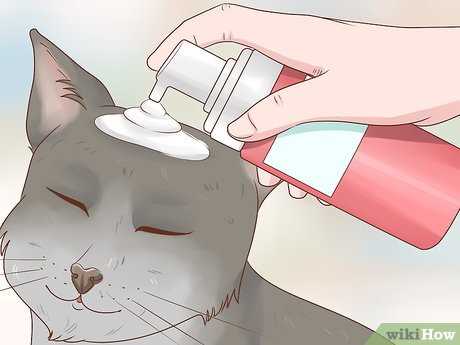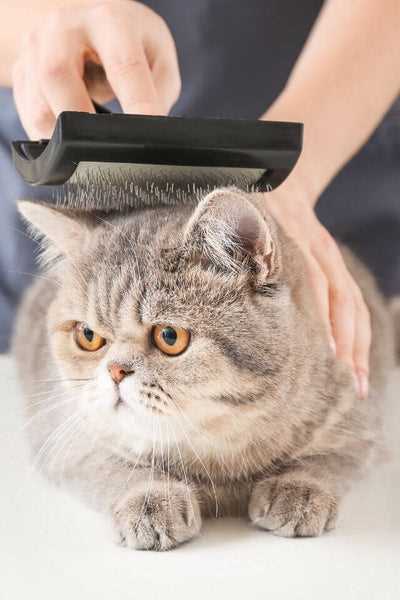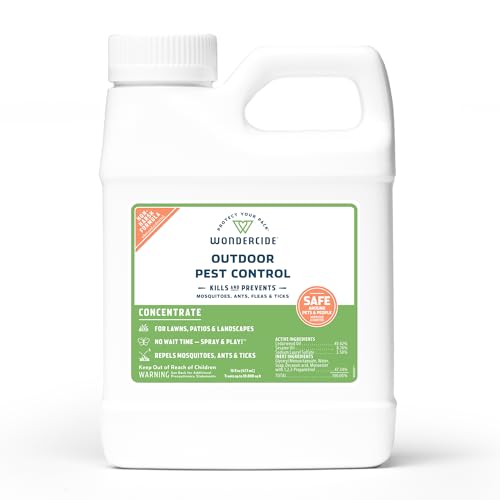Using a soft brush is the best way to remove loose hairs and dirt from my coat. A gentle stroke helps prevent tangles and matting, making me feel comfortable and looking fabulous.
I often recommend using a rubber grooming glove. This tool not only helps to collect dead hair but also massages my skin, which I absolutely love. The texture grabs onto the loose fur and makes the whole process enjoyable.
For those stubborn spots, a dry shampoo specifically designed for felines works wonders. Just a sprinkle and a light rub can refresh my coat without any moisture involved. It’s quick and helps eliminate odors, keeping me smelling delightful!
Regular maintenance is key. I appreciate a scheduled routine that ensures my coat remains in tip-top shape. With these simple strategies, I can strut my stuff with pride, looking neat and tidy every day.
Tips for Keeping My Coat Fresh
For a quick refresh, I recommend using a dry shampoo specifically designed for felines. Just sprinkle a small amount onto my coat, avoiding my face and eyes, then gently massage it in. This absorbs oils and odors, leaving me smelling delightful.
Another handy tool is a grooming wipe. These can be used to wipe away dirt and dander effectively. I enjoy the gentle caress of the wipe, and it helps eliminate any unwanted particles stuck to my coat.
Brushing Techniques
Regular brushing is key to maintaining a tidy appearance. Opt for a slicker brush or a rubber grooming mitt to remove loose hairs and prevent matting. I prefer a soft touch, which makes grooming a pleasant experience for both of us.
Maintaining a Clean Environment
Creating a clean space is equally important. Using the best cat litter for messy cats can minimize mess and odors around my living area, ensuring I stay fresh and comfortable.
Choosing the Right Tools for Dry Cleaning
For optimal grooming, selecting the appropriate tools is key. Here’s what I recommend:
- Rubber Brush: A flexible option that effectively removes loose hair and dander. It also massages my skin, which feels great!
- Lint Roller: Handy for quick touch-ups. Just roll it over my coat, and it picks up stray hairs effortlessly.
- Soft Bristle Brush: Ideal for smoothing my coat and distributing natural oils. Gentle bristles help avoid irritation.
- Dry Shampoo: A fantastic way to freshen up my coat between baths. Look for one specifically designed for felines.
- Microfiber Cloth: Excellent for wiping down my coat, especially if I’ve been rolling around in something messy.
Each tool serves a unique purpose, making grooming sessions enjoyable and effective. Choose what works best for your needs!
Step-by-Step Guide to Using a Brush
First, choose a brush that suits my coat type. For my short hair, a rubber brush works wonders to remove loose strands. If you have a long-haired buddy, a wide-toothed comb is the better choice.
Next, find a cozy spot where I feel relaxed. It’s important to make this experience enjoyable. This could be my favorite chair or a sunny spot on the floor.
Gently stroke the brush along my back, moving in the direction of my hair growth. Avoid pulling too hard; a soft touch keeps me calm and happy. Use short, gentle strokes to avoid any discomfort.
Focus on Problem Areas

Pay attention to areas where tangles often form, like behind my ears and under my chin. Use the brush to carefully tease out any knots. If I seem to be uncomfortable, take a break and give me a little petting to reassure me.
Finishing Touches
After brushing, check for any remaining debris or loose hairs on my coat. A quick run-through with your hands can help gather any left behind. It’s a nice way to show you care about my grooming!
Once the session is over, reward me with a treat or some playtime. This makes the experience pleasant and encourages me to look forward to our next grooming session.
Utilizing Pet Wipes for Quick Cleaning

Pet wipes are a fantastic option for a swift refresh. I recommend choosing wipes specifically formulated for my kind. Look for those that are alcohol-free and made from gentle, non-toxic ingredients. These are safe and effective for my sensitive skin.
Application Technique
To use the wipes, simply take one and gently wipe it along my coat. Focus on areas that tend to collect dirt or dander, like my paws and behind my ears. Avoid scrubbing too hard; a light touch is best to ensure comfort. Make sure to follow the direction of my hair for optimal results.
Frequency and Storage
Using pet wipes can be done as often as needed, especially between baths. Keep them in an easily accessible spot, so they’re always ready for a quick tidy-up. Make sure the lid is securely closed after use to prevent them from drying out.
Removing Mats and Tangles Safely
If you spot mats or tangles, tackle them gently. Begin by using your fingers to tease apart the clumps, starting from the outer edges and moving inward. This helps minimize discomfort and reduces the risk of pulling on the skin.
Choosing the Right Tools
Opt for a wide-toothed comb or a dematting tool specifically designed for this task. These tools are less likely to cause injury and are effective at loosening stubborn knots. Always ensure the tools are clean to avoid introducing any irritants to the skin.
Step-by-Step Technique
Work in a quiet area to keep me calm. Hold the base of the mat close to the skin to prevent pulling. Gently slide the comb through the mat, gradually breaking it apart. If a section proves too tough, use scissors to carefully snip the mat, ensuring you don’t cut the skin. Always check for any signs of pain or stress during this process.
In addition to grooming, consider occasional use of best presta valve inflator for air compressor to remove excess hair and debris from my coat. This can help keep things neat without excessive handling.
Maintaining a Regular Grooming Schedule
Establishing a grooming routine is key to keeping my coat in top shape. I recommend setting aside time every week for this task. Consistency prevents knots and matting, making it easier for my human to manage my coat.
Frequency depends on my hair type. For shorter coats, a weekly session suffices. Long-haired friends might need attention every few days. Here’s a simple schedule:
| Fur Length | Grooming Frequency |
|---|---|
| Short | Once a week |
| Medium | Every 3-4 days |
| Long | Every other day |
Using a calendar or reminder app can help my human stay on track. I enjoy these sessions; they’re a great bonding time. A relaxed atmosphere makes it easier for me to cooperate, so having treats on hand is a smart move.
Pay attention to my body language. If I seem agitated, it might be time to take a break. Patience is key! Regular grooming not only keeps me looking sharp but also benefits our relationship.
FAQ:
What are some safe alternatives to water for cleaning my cat’s fur?
There are several safe alternatives to water for cleaning your cat’s fur. One popular option is using a dry shampoo specifically formulated for cats. These products can absorb oils and dirt from the fur without the need for rinsing. Another method is to use baby wipes or pet wipes that are free from harsh chemicals. These wipes can help remove dirt and dander gently. Additionally, a simple mixture of cornstarch or baking soda can be sprinkled on the fur, left for a few minutes, and then brushed out to clean and freshen up your cat’s coat.
How can I effectively brush my cat to remove loose fur and dirt?
Brushing your cat regularly is an effective way to keep their fur clean and reduce shedding. Choose a brush that is suitable for your cat’s coat type—whether it’s short, medium, or long. Start by gently brushing in the direction of hair growth to avoid discomfort. Pay extra attention to areas that tend to mat, like behind the ears and under the legs. For long-haired cats, consider using a wide-toothed comb after brushing to help detangle any knots. Make the brushing session enjoyable by offering treats or praise to create a positive association with grooming.
Is it safe to use human shampoo on my cat?
No, it is not safe to use human shampoo on your cat. Cat skin has a different pH level compared to human skin, and using human products can lead to skin irritation, dryness, or allergic reactions. Instead, opt for shampoos specifically made for cats, as they are formulated to be gentle on their skin and fur. If you need to clean your cat and do not have pet shampoo available, consider using a small amount of mild dish soap diluted in water as a last resort, but make sure to rinse thoroughly and avoid sensitive areas like the face.
How often should I clean my cat’s fur without water?
The frequency of cleaning your cat’s fur without water largely depends on their breed, coat type, and lifestyle. For indoor cats with short hair, brushing once a week may be sufficient. However, long-haired breeds or cats that spend time outdoors may require more frequent grooming, potentially every few days. During shedding seasons, you may need to increase the frequency to help manage loose fur and prevent matting. Pay attention to your cat’s coat condition and adjust your grooming routine accordingly to keep their fur clean and healthy.






